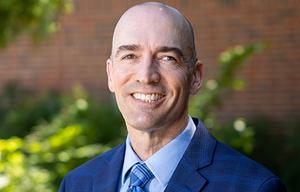
Law & Principles
Ray Carter | April 14, 2025
Oklahoma Republican Party opposes California election scheme
Ray Carter
Officials with the Oklahoma Republican Party have filed a lawsuit challenging a state question that would junk the state’s current election system and instead force Oklahoma voters to participate in a California-style system that often limits voters to candidates from only one party in November.
The brief, filed on April 9 by the Oklahoma Republican Party, refers repeatedly to a 2000 decision issued by the U.S. Supreme Court, Cal. Democratic Party v. Jones, noting that decision is one in which the U.S. Supreme Court struck down a law “imposing blanket open primaries on state political parties.”
The brief argues that the election system proposed through State Question 836 is very similar to the system struck down by the court in 2000.
Under SQ 836, all candidates from all parties would be listed on a single ballot in June and all voters would cast a ballot for any candidate, rather than having Republican voters choose a Republican nominee and Democratic voters choose a Democratic nominee.
The top two vote recipients would then be placed on the November ballot. That system would allow two candidates from the same party to be the only options available for the November general election.
In 2016, after California changed its elections, Kamala Harris was elected to the U.S. Senate when she and another Democrat were the only options on the November ballot.
However, in the Jones case, the Oklahoma Republican Party brief notes that the court concluded the law at the center of that case “forces political parties to associate with—to have their nominees, and hence their positions, determined by—those who, at best, have refused to affiliate with the party and, at worst, have expressly affiliated with a rival.”
The brief also argues that SQ 836 “advances no compelling state interests.” The arguments put forth by proponents of the law dealt with in the Jones case are largely identical to the arguments now put forth by supporters of SQ 836, the brief states, and the U.S. Supreme Court rejected those arguments.
Margaret Kobos, founder of Oklahoma United, which is promoting SQ 836, dismissed the Oklahoma Republican Party’s lawsuit, saying, “SQ 836 threatens a system that benefits only entrenched insiders at taxpayer expense, and so it’s unsurprising they’re doing everything they can to stop it.”
In November, officials with the group Oklahoma United announced that they were launching an initiative petition effort to eliminate party primaries in Oklahoma.
The election system proposed through SQ 836 is very similar to the model used in California since its 2012 elections.
A May 2014 report, “Voter Turnout in Primary Elections,” published by the Public Policy Institute of California, found that the election system proposed in SQ 836 produced very low voter turnout in California.
“SQ 836 threatens a system that benefits only entrenched insiders at taxpayer expense, and so it’s unsurprising they’re doing everything they can to stop it.” —Margaret Kobos, founder of Oklahoma United
In its first year of implementation in California, the “top two” primary also resulted in numerous general-election races pitting two members of the same political party against each other. The report noted there were 27 such one-party general-election races in California in 2012.
Former Democratic presidential nominee Kamala Harris was a beneficiary of California adopting the style of election system proposed for Oklahoma through State Question 836.
In the 2010 race for California attorney general, Harris narrowly beat her Republican opponent, receiving 46.1 percent of the vote to 45.3 percent in that year’s November election. That race occurred before California shifted to a SQ 836-style system.
But in 2016, after California changed its elections, Harris was elected to the U.S. Senate when she and another Democrat were the only options on the November ballot.
Had SQ 836 been adopted in Oklahoma, a similar outcome would have occurred in Oklahoma’s gubernatorial race in 2018.
Even though 10 candidates filed for governor as Republicans that year and only two filed as Democrats, Oklahoma voters would have been limited to a choice of only the two Democratic candidates on the November 2018 ballot under the SQ 836 system.
In the June 2018 primary, 452,606 Oklahomans cast a vote for a Republican gubernatorial candidate compared to just 395,494 votes cast for a Democrat, but the Democratic candidates would have been considered the “top two” finishers.

Ray Carter
Director, Center for Independent Journalism
Ray Carter is the director of OCPA’s Center for Independent Journalism. He has two decades of experience in journalism and communications. He previously served as senior Capitol reporter for The Journal Record, media director for the Oklahoma House of Representatives, and chief editorial writer at The Oklahoman. As a reporter for The Journal Record, Carter received 12 Carl Rogan Awards in four years—including awards for investigative reporting, general news reporting, feature writing, spot news reporting, business reporting, and sports reporting. While at The Oklahoman, he was the recipient of several awards, including first place in the editorial writing category of the Associated Press/Oklahoma News Executives Carl Rogan Memorial News Excellence Competition for an editorial on the history of racism in the Oklahoma legislature.